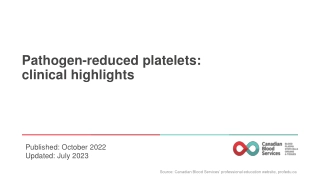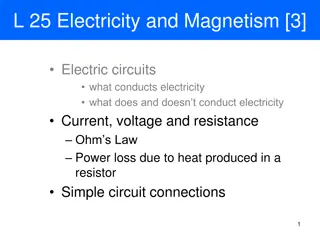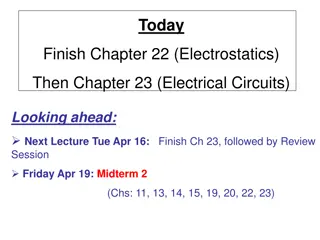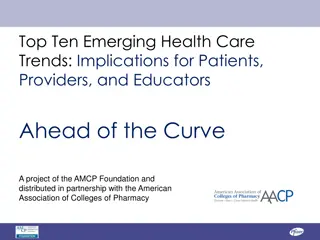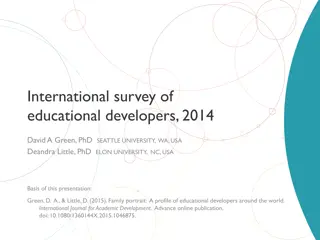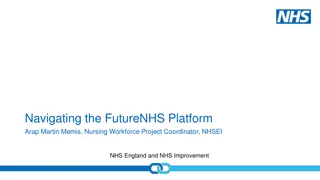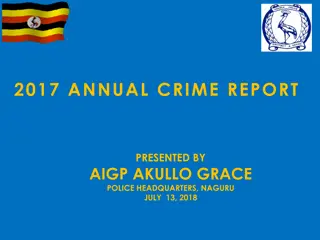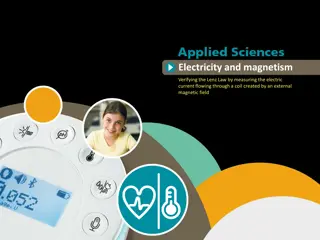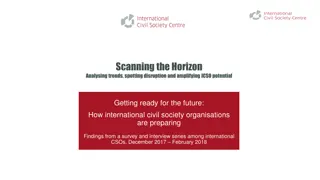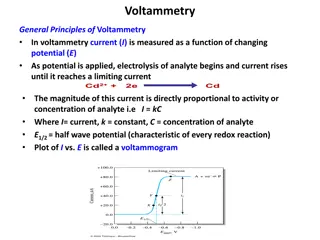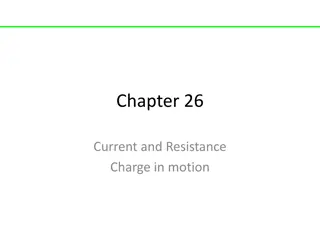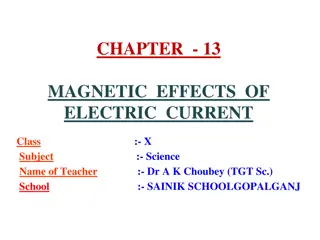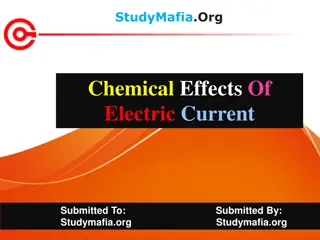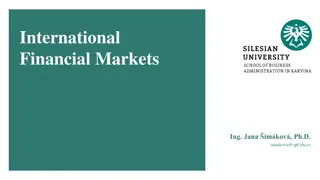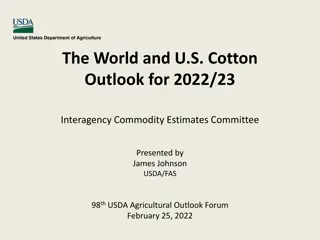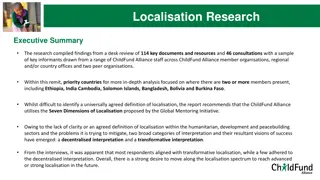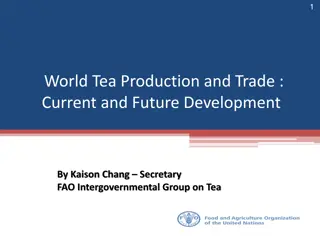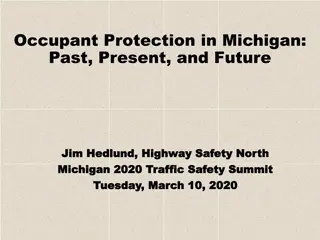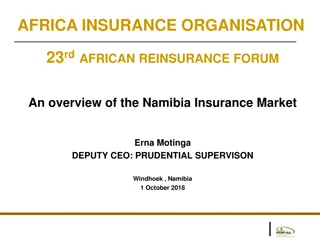International Hemovigilance: Current Trends and Insights
Explore the latest trends in international hemovigilance from presentations by experts like Dr. Pierre Robillard. Gain insights on incidence rates of adverse transfusion reactions, transfusion-related deaths, and global initiatives on defining reactions. Dive into data from various reporting systems and international studies to understand the landscape of transfusion reactions worldwide.
Download Presentation

Please find below an Image/Link to download the presentation.
The content on the website is provided AS IS for your information and personal use only. It may not be sold, licensed, or shared on other websites without obtaining consent from the author. Download presentation by click this link. If you encounter any issues during the download, it is possible that the publisher has removed the file from their server.
E N D
Presentation Transcript
New Trends in International Hemovigilance Pierre Robillard MD Medical Director, H ma-Qu bec 7th Annual Blood Matters Conference November 18, 2016, Halifax, NS
Plan of presentation 1. Present data on incidence of serious ATRs with emphasis on TACO and severe allergic reactions TTISS, QHS, ISTARE 2. Present data on transfusion-related deaths TTISS, QHS, ISTARE, FDA 3. Present international initiatives (or initiatives to be) on definitions TACO Serious allergic reactions Septic transfusion reactions Donor reactions
Incidence of ATRs reported to PHAC 2006-2012 Overall Risk Per 100,000 units transfused 15.2 Type of transfusion-related adverse reaction 1 case per X units transfused 1 : 6,583 Frequency 1,242 TACO 109 1.3 1 : 75,014 AHTR 411 5.0 1 : 19,894 Severe allergic Hypotensive reaction DHTR 298 211 3.6 2.6 1 : 27,438 1 : 38,751 79 1.0 1 : 103,500 TRALI Possible TRALI TAD Incompatible transfusion Bacterial infection Other Unusual reactions Total 62 134 0.8 1.6 1 : 131,879 1 : 61,019 51 0.6 1 : 160,324 33 193 97 2,920 0.4 2.4 1.2 35.7 1 : 247,773 1 : 42,365 1 : 84,294 1 : 2,800
Incidence of ATRs reported to QHS - 2012 TACO Severe ALLERGIC
Incidence of ATRs reported to PHAC per 100,000 units transfused
Incidence* of TACO reported to QHS 2000 - 2012 * Per 100,000 units transfused
Incidence* of Severe Allegic Ractions reported to QHS 2000 - 2012 * Per 100,000 units transfused
ISTARE data 2006 -2014 on Recipients Variation in the incidence and imputability of transfusion reactions C. Politis (Greece), C. Richardson (Greece), J. Wiersum ( The Netherlands), P. Robillard (Canada), M.A. Escoval (Portugal), P. Renaudier (France), J.C. Faber (Luxemburg), E. Wood (Australia) ISBT-Dubai 2016
Participating countries in ISTARE 23 23 22 22 17 16 14 11 2006 2007 2008 2009 2010 2012 2013 2014
Volume of data, 2006-2014 Data Units issued 171,417,774 (100%) Units transfused 65,331,231 (38%) Recipients Total ARs 148,795 Incidence 88 / 100,000 units issued Deaths 495 Incidence 0,29 / 100,000 units issued Donors 2014 Total donor complications 124,725 Incidence 604 / 100,000 all donations 374 / 100,000 whole blood donations 767/ 100,000 aphaeresis blood donations
Distribution of ARs by type 2006-2014 Total ARs(n=138,227) Deaths (n=495) Most common types FNHTR 34% TACO 24.5% Allergic 34% TRALI 17.6% DSTR 12% TAD 13% TACO 4% Allergic 12.3% DHTR 3% AHTR 6.9% TAD 2% Other 10.3 AHTR 2% Hypotensive 1% TRALI 1%
Transfusion-related deaths reported to PHAC Transfusion- related deaths TACO 2006 2007 2008 2009 2010 2011 2012 Total 2 1 4 1 1 2 2 13 TRALI 2 0 0 0 1 1 1 5 Possible TRALI AHTR 2 0 1 2 2 2 2 11 1 1 2 0 0 0 0 4 TAD 0 0 0 0 1 0 0 1 Bacterial infection Hypotensive reaction Other 0 0 1 0 0 1 0 2 1 0 0 0 0 0 0 1 0 1 1 1 0 0 1 4 Total 8 3 9 4 5 6 6 41
Fatal Adverse Reactions Associated with Transfusion of Blood Components ISTARE 2006-2013 C. Politis (Greece), I. Sandid (France), M.A. Escoval (Portugal), G. Facco (Italy), J.Wiersum - Osselton (Netherlands), Cl. Richardson (Greece), P. Robillard (Canada), J. Dagger (New Zealand), N. Moleli (South Africa), P.F.T. Barbosa (Brazil),R. Brady (Ireland), D.Sarlija (Croatia), S. Sainio (Finland), L. Muylle (Belgium),B. Aagaard (Denmark)
Period 2006-2013 Participating countries : 28 (35% outside Europe) Total number of Deaths: 409 (0.35% of all Ars) Incidence : 0.3:100,000 (issued blood components)
2006-2013 Most common Less frequent Type % n TACO 24,9 Respiratory 55% TRALI 18,2 TAD 12,3 Allergic 11.8 AHTR 7.4 TTBI 3.7 Other 10.3 UCT 4.2 Deaths attributed to Respiratory ARs Incidence 0.17 per 100,000 issued blood components
Current international initiatives Revision of international recipient hemovigilance definitions Joint ISBT, IHN, AABB TACO working group New definition Validation exercise Revision of international donor hemovigilance definitions Joint ISBT, IHN, AABB TACO working group New definitions Validation exercise
http://www.isbtweb.org/fileadmin/user_upload/Proposed_definitions_2011_surveillance_non_infhttp://www.isbtweb.org/fileadmin/user_upload/Proposed_definitions_2011_surveillance_non_inf ectious_adverse_reactions_haemovigilance_incl_TRALI_correction_2013.pdf
TACO international definition CURRENT TACO is characterized by any 4 of the following: Acute respiratory distress Tachycardia Increased blood pressure Acute or worsening pulmonary edema on frontal chest radiograph Evidence of positive fluid balance occurring within 6 hours of completion of transfusion. An elevated BNP is supportive of TACO.
TACO international definition Newly PROPOSED Patients classified with a TACO (surveillance diagnosis) should exhibit: acute onset or worsening respiratory distress during or up to 12 hours after transfusion; and two or more of the following: Evidence of acute or worsening pulmonary oedema based on: clinical physical examination (see Note 1), and/or radiographic chest imaging (see Note 2) Evidence for unanticipated cardiovascular system changes including development of tachycardia, hypertension, jugular venous distension and peripheral edema (see Note 3) Evidence of fluid overload including any of the following: a positive fluid balance response to diuretic therapy combined with clinical improvement change in the patient s weight in the peri-transfusion period (see Note 4) Elevation in natriuretic peptide (NP) levels (e.g., BNP or NT-pro BNP) to greater than 1.5 times the pretransfusion value. A normal post-transfusion NP is not consistent with a diagnosis of TACO; serial testing of NP levels in the peri-transfusion period may be helpful in identifying TACO.
TACO international definition Note 1. Clinical findings could include crackles on lung auscultation, orthopnea and cough, cyanosis and decreased oxygen saturation values in the absence of other specific causes. Note 2. Diagnostic radiographic Imaging Findings consistent with circulatory overload could include presence of new or worsening pleural effusions, progressive lobar vessel enlargement, peribronchial cuffing, bilateral Kerley lines, alveolar oedema with nodular areas of increased opacity and cardiac silhouette enlargement. Note 3. Blood pressure monitoring Often the arterial pressure is raised, often with widened pulse pressure; however hypotension may be a presenting feature, e.g. in patients in a state of acute cardiac collapse. Blood pressure should be monitored especially if multi-unit transfusions are given. Note 4. Change in the patient s weight Typically the patient s weight will increase. However there may be a decrease following diuretic therapy.
Minor allergic reaction definition ISBT-IHN PHAC Mucocutaneous signs and symptoms: Skin reaction characterized by: a transient urticarial or other skin rash with pruritus associated with the transfusion. This reaction may be associated with localized angioedema without respiratory distress Morbilliform rash with pruritus Urticaria (hives) Localized angioedema Edema of lips, tongue and uvula Periorbital pruritus, erythema and edema Conjunctival edema Occurring during or within 4 hours of transfusion
Severe allergic reaction definition ISBT-IHN PHAC In addition to mucocutaneous signs and symptoms: Respiratory involvement : Laryngeal tightness in the throat dysphagia, dysphonia hoarseness, stridor Pulmonary dyspnea, cough wheezing/bronchospasm Hypoxemia Cardiovascular involvement Hypotension requiring vasopressors Shock In addition to mucocutaneous signs and symptoms: Respiratory involvement : Laryngeal tightness in the throat dysphagia, dysphoria hoarseness, stridor Pulmonary dyspnea, cough wheezing/bronchospasm Hypoxemia Cardiovascular involvement Severe hypotension requiring vasopressors Circulatory collapse Occurring during or very shortly after transfusion
TTBI definition in need of revision at an international level They studied 51 440 platelet units cultured at issue and transfused 20 were bacterially contaminated 5 caused a reaction as identified by record examination None were reported to the hpsital blood bank
TTBI definition in need of revision at an international level
TTBI definition in need of revision at an international level
THANK YOU QUESTIONS?


